Facts
| Terrain: | Road |
|---|---|
| Arch support: | Neutral |
| Use: | Jogging |
| Weight: | Men: 270g | Women: 200g |
| Heel to toe drop: | Men: 10mm | Women: 10mm |
| Pronation: | Neutral Pronation |
| Arch type: | High arch |
| Strike Pattern: | Heel strike |
| Distance: | Daily running | Long distance | Marathon |
| Brand: | Nike |
| Width: | Men: Narrow, Normal, Wide, X-Wide | Women: Normal, Wide, X-Wide |
| Price: | €80 |
| Colorways: | Black, White, Blue, Silver, Grey, Red |
Rankings
Expert Reviews
Experts are runners, who post reviews at youtube, directly at RunRepeat or at their own websites. Each expert is categorized from level 1 to level 5 based on expertise. See stats on expert reviews and how we calculate scores here.
Are you an expert? Apply to contribute here.
89 / 100 based on 2 expert reviews
-
The Nike Revolution 4
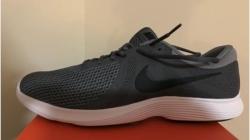
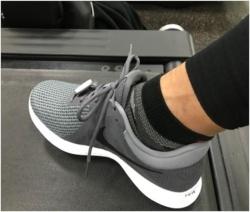
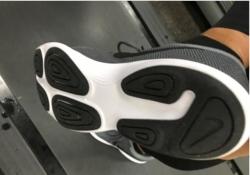
Ten miles down and many more to go - I am pushing towards that goal. Running has taken my level of fitness to a different state. I look forward to "running season", however, I do run year round. I like the challenge that it presents each and every time I lace up my shoes. “Fear No Distance”.
Since I had over 200 miles on my other Nike’s, I purchased a new pair of Nike’s. The Nike Revolution 4 has a different sole. It’s what I like to refer to as mini shock absorbers.
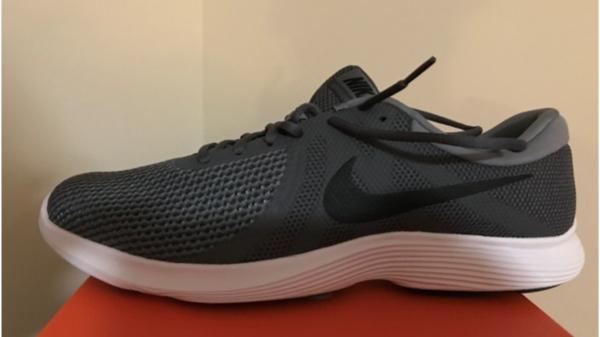
Not sure if it can be seen in the picture, but I have written the date of purchase on the outer sole of my shoe. I try to remember to do this with all of the running shoes that I buy just so I can keep track of the mileage and the date of purchase which I am sure there is an easier way of doing this but this works for me.
I "test drove" these in a maintenance run first on 5 miles and then I put them to the test of 10 miles. During the first run of miles, once I hit the 3-mile mark or so, I noticed that my feet started to get hot.
I continued with my run and at the end of the run, I noticed a considerable difference in the temperature of my feet in these shoes. Houston, we have a problem!
To me, these shoes run hot. They took to the treadmill and I didn’t have a problem with them as far as the grip and control but these are hot!

Comfort
The fit is great enough for my toes to move around but not too much. The padding in the tongue of the shoe is thick enough but not too thick that it binds up when the shoes are tied.
The stability is good and it allows for a full forefoot strike while not feeling it through my knees. Not very ventilated so expect the sweating of the feet!
Performance
The shoes are lightweight but are sturdy enough to pound the pavement but not feel it in the legs. The cup around the heel secures the heel and doesn’t allow it to move around.
There is enough room around the toes and there is more than enough cushioning for the entire foot. The toe to heel drop allows for control whatever the mileage. My foot feels secure enough so that there is no unnecessary movement and allows for the shoe to move with the foot.
The tread design allows for sufficient gripping, no slipping here. I haven’t run in the rain with them yet so I am not sure what the fabric performance will be like.
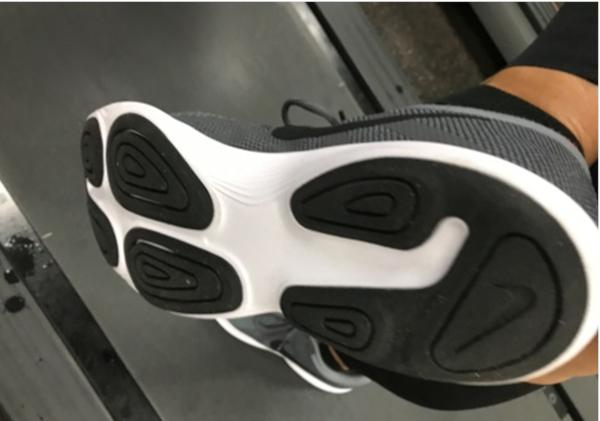
I do believe the more I run in them the more comfortable they become. They have a great return when running on the treadmill, you can feel the energy coming back when placing the foot down.
Conclusion
I bought these shoes because of the review that I read about them and because I was in need of a new pair. New shoes, new distance!
I like the fact that I still have control in these shoes, they aren’t big and clunky. They are still lightweight but stable with support for the foot. I am running more and I expect my shoes to give back as much as I give them and these do just that.
One negative comment about the Nike Revolution 4 - I did notice that while I was running, my feet began to sweat even though I wear moisture wicking socks. I noticed a difference in the temperature of my feet as opposed to the other shoes I have worn.
These shoes run a little hot. These are cosmetically good looking shoes; they are lightweight with a thick sole that is very comfortable padding in all the right places to include the tongue of the shoe.
This expert has been verified by RunRepeat. Reviews are neutral, unbiased and based on extensive testing.
-
I personally love the fitted style of these shoes. They fit like gloves for your feet.
-
-
-
- The Nike Revolution 4 is a road running shoe that’s crafted for neutral pronators. It has a cushioned platform that can also support those who have high arches (underpronators). The design of this model is somewhat similar to its immediate predecessor, the Nike Revolution 3, save for an upper construction that is more open and lightweight.
- The overlay system continues to be of the printed variety, though the thin synthetic material is much more liberally utilized on this model’s façade than the prior version. Some stitching is used to reinforce the structure of the upper unit’s components, but the configuration is mostly smooth and free of seams.
- Ethylene-vinyl acetate serves as the midsole unit of this road companion. This full-length foam offers bouncy and flexible support. Traction is given by a rubber compound that covers the contact points of the external pad.
The Nike Revolution 4 was created to be true-to-size. Runners can get a pair using the sizing choices with which they’re most comfortable. When it comes to width, the Nike Revolution 4 men’s running shoe has the D – Medium and 4E – Wide options; the Nike Revolution 4 women’s running shoe’s variants are B – Medium and D – Wide. The dimensions of this product welcome those who have medium foot volumes.
The semi-curved shape of this running shoe mimics the natural outline of the human foot. The last has a semi-noticeable slant that offers a familiar and accommodating tactile experience while in use.
The outsole unit of the Nike Revolution 4 utilizes a rubber compound, which covers the contact points. The purpose of this layer is to protect against wear-and-tear. It is also meant to ensure grip over the surfaces.
Semi-circular patterns encompass the rubber pads of the outsole. These designs are intended to heighten grip over the asphalt. They also improve the capacity of the platform to be flexible.
Grooves line the sections of the external pad that aren’t layered with rubber. These shallow but wide trenches are designed to make the platform adherent to the flexing of the foot as it transitions through the gait cycle.
The Nike Revolution 4 features a full-length ethylene vinyl acetate (EVA) foam as its midsole unit. This compound has a bouncy and flexible nature that accommodates that natural motion of the foot. It also has a slight midfoot curve to support the arch.
An insole is placed right above the primary cushioning unit. This add-on has a molded structure that accommodates the crevices of the foot-pad. Having such a design enables a relaxed in-shoe experience as the supportive curves potentially remove strain from the tendons and muscles.
The heel-to-midfoot part of the upper unit features a tightly woven mesh which is a staple of the Revolution series. This configuration is intended to make the cover system as secure as possible as it considers the prevention of accidental shoe removals.
The forefoot of the Nike Revolution 4’s façade employs an open-weave mesh. This material has visible pores that are meant to accommodate environmental air into the interior chamber. The breeze can maintain a cool and dry sensation throughout the running session.
Synthetic prints streak across the middle of the façade. These thin layers help in keeping the foot in place. They also bolster the façade, preventing it from losing its form or structural integrity as time passes.
The Nike Swoosh® logos are fused to the left and right sides of the upper. These well-known checkmarks are added to heighten brand recognition, as well as the aesthetics of the running shoe.
The collar and tongue are padded. These parts of the shoe are meant to cushion the upper portions of the foot, namely the heel, the ankles, and the instep. They also avert in-shoe quivering during the run, thereby maintaining steadiness.
Semi-round laces snake through discreet eyelets that are reinforced by printed overlays. The crisscross system allows the runner to adjust the tightness or looseness of the fit. The customizability of the coverage can potentially make the running experience more agreeable than expected.
The Revolution series was generally well-received by consumers. It is considered to be one of the prominent group of shoes when it comes to affordability and agreeable performance. As it evolved over the years, user feedback also gave it the drive to retain its best features or discover new technologies. So how does the Revolution 4 running shoe compare to its antecedent, the Revolution 3, regarding user feedback?
The 3rd iteration garnered positive user response because of its breathable upper, the snug yet form-fitting coverage, and its affordable price. The successor also received similar reviews, though more people took notice of the flexible underfoot experience and the non-irritating inner sleeve.
Durability was apparently an issue for both shoes, with consumers reporting some early material breakdown and fabric tearing after several uses. The Nike Revolution 4 was also said to be half-a-size smaller than the usual and a bit tight in the forefoot.
Nike Air Zoom Winflo – The Zoom Air technology is one of the most prominent innovations from the Nike creative labs. It is comprised of a compressed-air-filled durable yet malleable case that is placed inside the midsole foam. The purpose of this feature is to attenuate impact shock during the striking phase and put more spring to the toe-off. Its presence in the Winflo series allowed it to be well-known, especially since that group of shoes is traditionally inexpensive. Like the Nike Revolution 4, the Zoom Winflo 4 comes in many colorways and a semi-casual look that allows it to be used in a variety of activities.
Brooks Ghost – One of Brooks’ premier series of neutral shoes is the Ghost line, which is comprised of straightforward-looking products that aim to provide flexible and contoured cushioning for the underside of the foot. Proprietary components work together to afford an in-shoe experience that is free of restrictiveness. The 11th iteration, in particular, was highlighted by consumers as a complete package of security, comfort and responsive performance. This shoe is more expensive than the Nike Revolution 4 due to its abundance of features, but it houses the same uncluttered look that welcomes the natural capability of the foot to transition through the gait cycle.
Skechers GOrun – The GOrun series was born to exhibit flexible and speedy performances. The midsoles of these products have a parametric design that helps in easing the heel-to-toe transitions. Impact absorption and bounciness are also highlights of the platforms’ purpose. The Skechers GOrun 600 is a sample of this group, and it has an inexpensive price, a no-nonsense design, and a balanced performance-to-stylishness ratio that welcomes any neutral running or casual shoe enthusiast.
Adidas Ultra Boost – One of the flagship companies has created running shoes that are synonymous with the brand. The Ultra Boost series is considered to be one of the leading choices when it comes to a balance between performance and aesthetics. Throughout the years, the innovative minds in the Adidas creative centers have made the shoes more accommodating, particularly in bridging the gap between road running and trail adventures. Enter the Adidas Ultra Boost ATR, a visually appealing creation that offers a form-fitting fit and a reactive underfoot experience. The unique element comes in the form of the outsole which has an ATR (all-terrain runner) distinction, allowing it to transition between flat planes and irregular topography.
Nike began as Blue Ribbon Sports (BRS) in 1964. The fledgling brainchild of Phil Knight and Bill Bowerman didn’t even start as a significant provider of sportswear. It began as one of Japanese company Onitsuka Tiger’s American distributor of footwear. This setup lasted until 1971.
Eventually, BRS wanted to make and sell their own line of shoes. Bowerman, himself an innovator, created the company’s precursor line of running shoes. The ‘waffle’ midsole design that heightened flexibility and natural performance sparked the rise of the future-giant of the sports world.
The ‘70s were years of many beginnings and experimentations. But the ‘80s saw Nike’s steam engine go at full-speed, especially when the Air Max roster was unleashed to the world. Functionality didn’t remain the only criterion when it comes to the release of performance shoes; people also began to enjoy the stylishness of the apparel as they began on to use athletic footwear for casual purposes.
Nike helped in transforming people’s perspectives about running shoes. Today, not only do millions of people buy running shoes for their daily activities, but they also use them as statements of their fashion sense. Moreover, they can just go to the track or gym without ever changing their shoes. One can say that this new wave of footwear enthusiasm brought more power to Nike’s most well-known saying, “Just Do It.”




